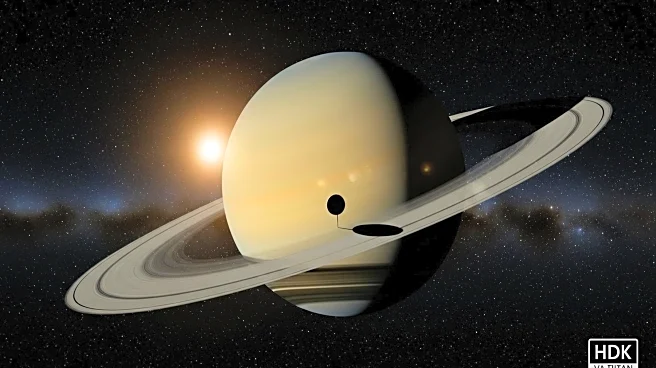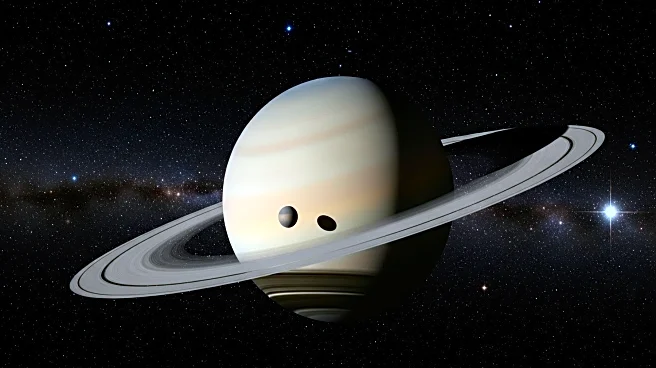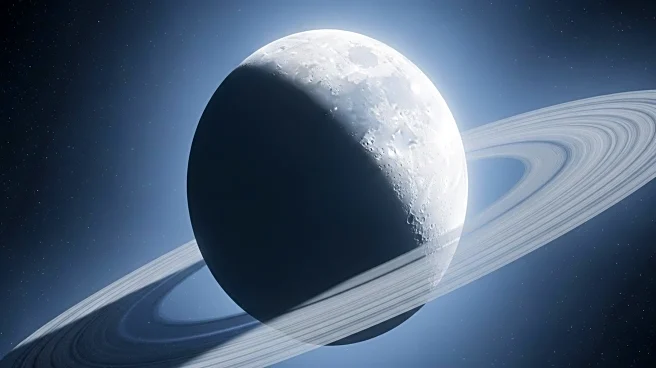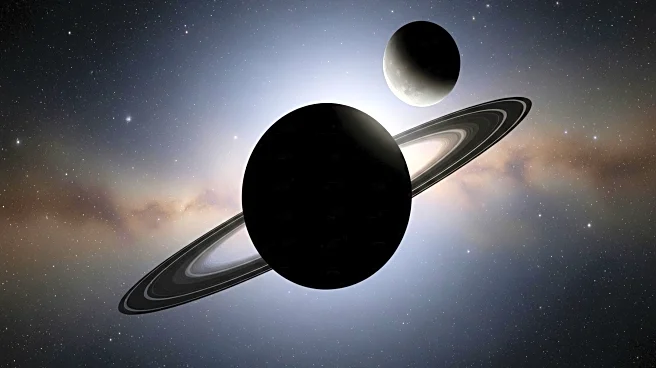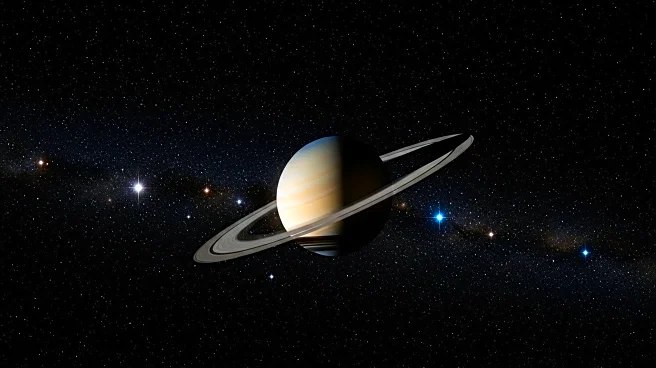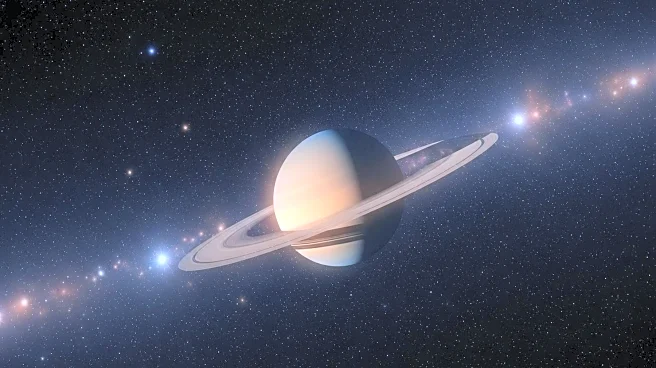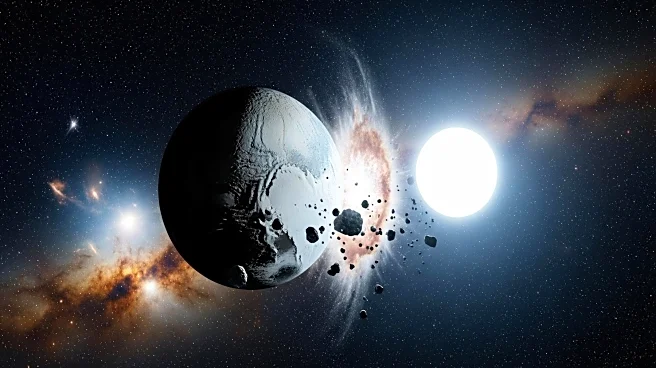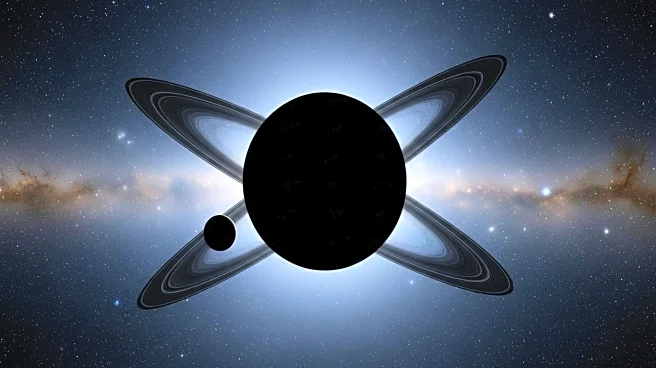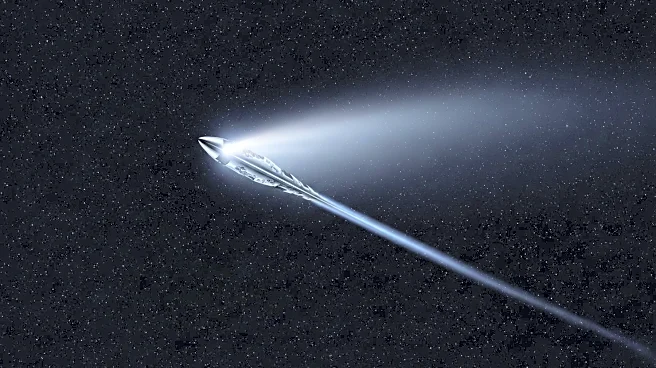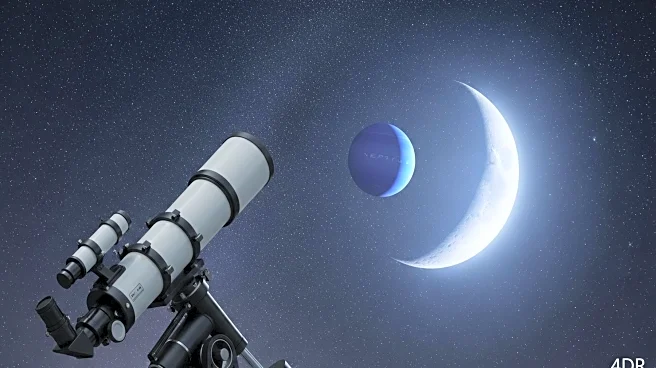What's Happening?
On September 20, 2025, a rare astronomical event will occur as Titan, one of Saturn's moons, transits across the planet's disk, accompanied by its shadow. This event will begin at approximately 12:30 A.M. EDT and last nearly four hours. The transit will be visible through telescopes, with Titan starting its crossing at around 12:33 A.M. EDT, followed by its shadow at 12:37 A.M. EDT. The event will conclude with the shadow's departure at 4:04 A.M. EDT and Titan at 4:37 A.M. EDT. Other Saturnian moons, such as Tethys, Rhea, and Dione, will also be observable, although Enceladus' transit may be obscured due to its smaller size and faintness. This Titan shadow transit is a relatively rare occurrence, with the next similar event not expected for over a decade.
Why It's Important?
This astronomical event is significant for both amateur and professional astronomers as it provides a unique opportunity to observe the dynamics of Saturn's moons. The transit of Titan and its shadow across Saturn offers insights into the orbital mechanics and physical characteristics of these celestial bodies. Such events are rare, making them valuable for scientific observation and public engagement with astronomy. The visibility of multiple moons during the transit also allows for comparative studies of their sizes, brightness, and positions relative to Saturn. This event highlights the importance of continued observation and study of our solar system's planets and their satellites, contributing to our understanding of planetary systems.
What's Next?
Following this event, astronomers and enthusiasts will likely continue to monitor Saturn and its moons for further transits and other phenomena. The data collected during this transit can be used for future research and educational purposes. As the next similar event is not expected for over a decade, this transit serves as a reminder of the importance of seizing observational opportunities when they arise. Additionally, the event may inspire increased interest in astronomy and space exploration, potentially leading to more public and private investment in these fields.

